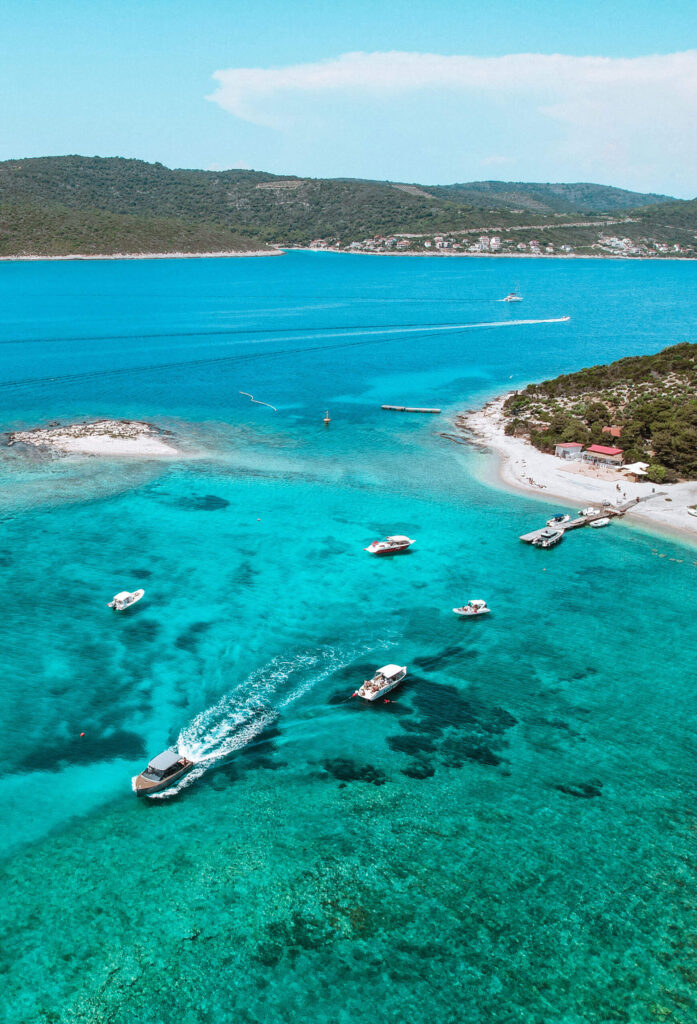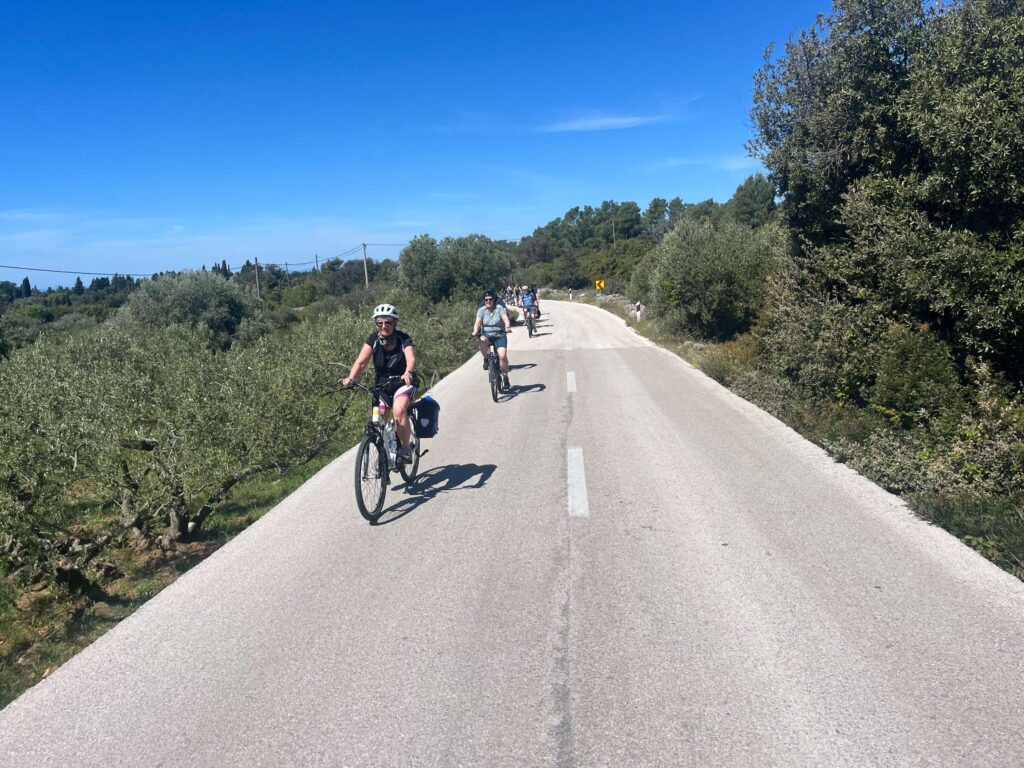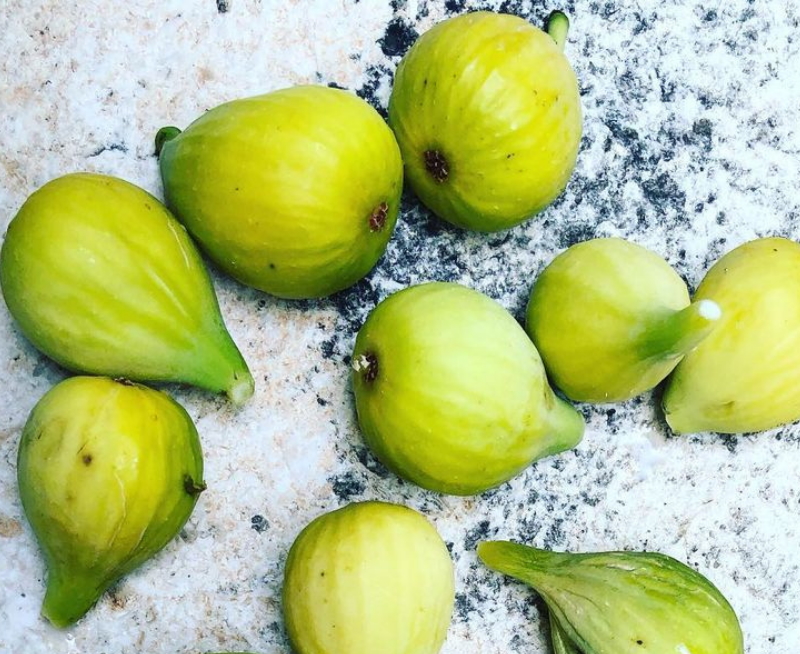The world of figs is vast and diverse, but few varieties capture the imagination quite like the Dalmatian Fig (Ficus carica ‘Dalmatie’). This extraordinary fruit, hailing from the sun-kissed shores of Croatia’s Dalmatian Coast, particularly the historic island of Lesina (Hvar), has become a cherished favorite among fig enthusiasts and gardeners worldwide. Let’s delve deep into what makes this remarkable variety so special and why it might be the perfect addition to your garden.
A Heritage of Sweetness: Understanding the Dalmatian Fig
The Dalmatian Fig, also known by its botanical name Ficus carica ‘Dalmatie’ or ‘Precose de Dalmatia’, represents centuries of careful cultivation along the Croatian coastline Dalmatian Coast. This variety stands out not just for its impressive size but for its exceptional flavor profile that has earned it a special place in the hearts of fig connoisseurs.
The Tree: A Compact Wonder
Unlike many fig varieties that can grow to imposing heights, the Dalmatian Fig tree maintains a remarkably manageable stature. Growing to a modest height of about 3 meters with a similar spread, this compact tree proves that good things indeed come in small packages. The tree’s architecture is particularly interesting, featuring what some might call a “bare” appearance with reduced branching, making it perfect for smaller gardens or even container growing.
What truly sets this tree apart is its incredible resilience. Young trees might need some coddling during their first winters, but mature specimens can withstand temperatures as low as -20°C. This exceptional cold hardiness, confirmed by numerous growers and documented by Secret Garden nursery, makes it a viable option even in regions with challenging winter conditions.
Fruit Characteristics: A Symphony of Flavors
The fruits of the Dalmatian Fig are nothing short of remarkable. Let’s break down their characteristics:
Size and Appearance
These figs are impressively large, with the early summer crop (known as Breba) producing fruits weighing between 80-100 grams. The main autumn crop, while slightly smaller at 70-80 grams, still produces substantially sized fruits that command attention. Their size is particularly noteworthy given the compact nature of the tree itself.
Flavor Profile
The taste is where the Dalmatian Fig truly shines. Fig enthusiasts consistently praise its intense, sweet, and aromatic flavor profile. According to detailed reviews on Fig Boss and Our Figs forum, these figs showcase a distinctive “Adriatic-type” cherry-berry flavor that sets them apart from other varieties. The combination of sweetness and aromatic complexity creates an unforgettable taste experience.
Structural Excellence
One of the most practical features of the Dalmatian Fig is its tight, almost closed eye (the opening at the bottom of the fig). This characteristic, noted by experienced growers on Our Figs forum, is particularly valuable as it helps prevent spoilage during wet weather conditions packing guide. The fruit’s dense, nectar-filled pulp provides a rich, satisfying eating experience that has helped establish its reputation as one of the finest fig varieties available.
Growing Your Own Dalmatian Fig: A Practical Guide
Self-Sufficiency and Care
One of the most appealing aspects of the Dalmatian Fig is its self-fertile nature. As a parthenocarpic variety, it doesn’t require a companion tree for pollination, making it an excellent choice for home gardeners with limited space. However, to achieve the best results, there are several key considerations:
- Sunlight Requirements
Position your tree where it will receive abundant sunlight. This is crucial for optimal fruit development and flavor. - Water Management
While figs are generally drought-tolerant once established, consistent watering during the fruiting season helps ensure plump, juicy fruits. - Fertilization
Strategic fertilization, particularly as the bearing season approaches, supports healthy growth and abundant fruit production.
Climate Adaptation and Protection
While the Dalmatian Fig shows impressive cold hardiness, young trees benefit from winter protection in colder regions. This might include:
- Wrapping the trunk and main branches
- Applying mulch around the root zone
- Moving container-grown specimens to protected areas during extreme cold spells
Seasonal Rewards: Two Crops to Enjoy
Unlike some fig varieties that produce only one crop, the Dalmatian Fig offers two distinct harvesting periods:
Early Summer Crop (Breba)
The first crop arrives in early summer, producing particularly large fruits that serve as a delicious preview of what’s to come.
Main Autumn Crop
The second and more substantial crop arrives in autumn, offering slightly smaller but equally delicious fruits in greater numbers.

Comparing Varieties: What Makes Dalmatian Special
When compared to similar varieties, the Dalmatian Fig holds its own. For instance, while it shares some visual similarities with the Stella fig, there are notable differences:
Dalmatian Fig:
- Tighter eye
- More intense berry flavor
- Slightly smaller size
- Superior resistance to spoilage
Stella Fig:
- Larger, open eye
- Sweeter “Honey Berry” flavor
- Larger size overall
- More susceptible to moisture-related issues
Practical Applications: Beyond Fresh Eating
While the Dalmatian Fig excels as a fresh-eating variety, its versatility extends to numerous culinary applications:
- Fresh Consumption
The sweet, aromatic flesh makes these figs perfect for enjoying straight from the tree. - Preserves and Jams
Their high sugar content and intense flavor make them excellent candidates for preserving. - Culinary Applications
The substantial size and rich flavor profile make these figs perfect for:
- Baking
- Dessert preparations
- Pairing with cheese and charcuterie
- Making preserves and confections
Ornamental Value
Beyond its edible offerings, the Dalmatian Fig serves as an attractive ornamental specimen:
- Compact growth habit suitable for small spaces
- Attractive large leaves
- Architectural branching pattern
- Adaptability to container growing
Best Practices for Success
To ensure the best possible results with your Dalmatian Fig, consider these key tips:
- Planting Location
- Choose a sunny spot with good air circulation
- Provide protection from strong winds
- Ensure well-draining soil
- Maintenance Schedule
- Regular pruning to maintain shape and size
- Consistent watering during fruit development
- Annual fertilization schedule
- Harvest Timing
- Monitor fruit ripeness carefully
- Harvest when fruits are fully colored and slightly soft
- Pay attention to both early and main crop timing
Disease and Pest Management
One of the Dalmatian Fig’s strongest attributes is its natural resistance to pests and diseases. This resilience makes it particularly appealing for organic gardening approaches and reduces the need for chemical interventions.
Future Prospects and Preservation
The Dalmatian Fig represents an important piece of horticultural heritage. Its combination of desirable traits – cold hardiness, excellent flavor, and manageable size – makes it a valuable variety for both current gardens and future breeding programs.
Conclusion: A Fig for the Future
The Dalmatian Fig stands as a testament to the rich horticultural heritage of Croatia’s Dalmatian Coast. Its combination of exceptional flavor, impressive cold hardiness, and manageable size makes it an excellent choice for both experienced fig growers and newcomers to fig cultivation. As climate challenges continue to affect agriculture worldwide, varieties like the Dalmatian Fig, with their natural resilience and adaptability, become increasingly valuable.
Whether you’re a dedicated fig enthusiast or simply someone looking to add a productive and delicious fruit tree to your garden, the Dalmatian Fig offers an exciting opportunity to experience one of the fig world’s finest varieties. Its legacy of sweetness, combined with practical growing characteristics, ensures its place in gardens for generations to come. For those inspired to explore the region where this fig thrives, consider planning your visit with our comprehensive packing guide.
Further reading:
Dalmatie Fig | Comprehensive Variety Review
Figs in Dalmatia

